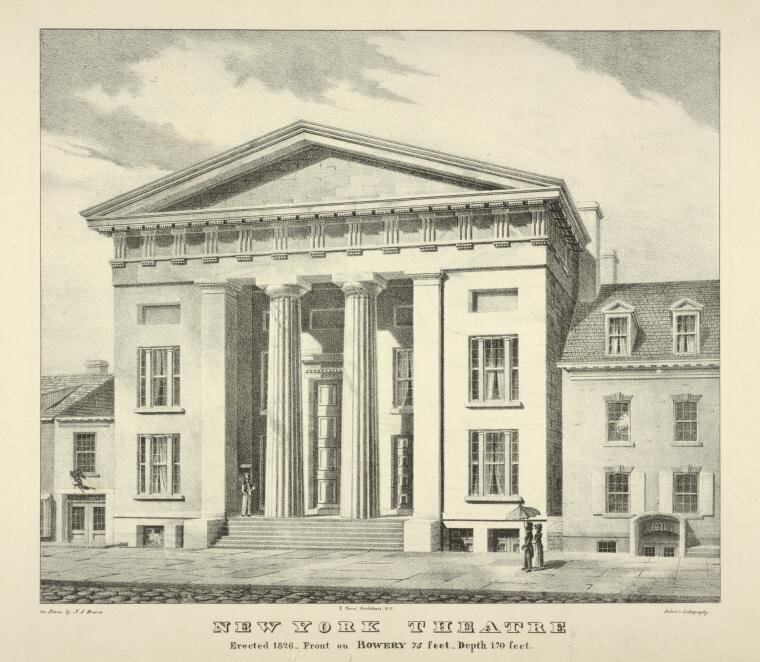

FALSE FACE, FALSE HEART, my YA Historical Fiction project, set in the Bowery Theatre in New York City during the tumultuous year of 1849 has sent me on a journey
Combing Through Research.
The more I delved into the real life characters, the city’s impoverished Lower East Side and the gentry mansions uptown, the more captivated I became. The themes explored in my story are relevant to today’s social and political climate: anti-immigration, income inequality, police brutality, women’s rights, and disease.
The Bowery Theatre located near Chatham Square was at the center of the tumult. The broad range of entertainment produced there such as “Blood and Thunder” melodramas full of spectacle and theatrical violence, Mose the Fireman – a folk hero character beloved by the working class, and of course a little Shakespeare thrown in, all piqued my interest. (More to come in future posts!) All this, combined with the fanciful allure of ghost stories tickles a forever “theatre kid,” like me. I’m happy to share what I’ve learned in this blog,
COMBING THROUGH RESEARCH.
Photo Credit: New York Public Library
ALMACK’S DANCE HALL AND THE BIRTHPLACE OF TAP DANCE
The Five Points
The Upper Ten Thousand
Lagrange Terrace
The Merchant House Museum
Frank S. Chanfrau
Watching the great Edwin Forrest on stage inspired Frank Chanfrau to become an actor. Early in his career he was known for being an excellent mimic, imitating Junius Brutus Booth (father of John Wilkes Booth), Thomas Hamblin, manager of the Bowery Theatre, and Edwin Forrest himself.
William Charles Macready
Although his father was an actor and theatre manager, William Macready disliked the theatre. So when he was sent to Rugby boarding school in Warwickshire, England, (the birthplace of Rugby football) Macready embraced the education hoping it would lead to a more desirable profession than acting.
Edwin Forrest
Edwin Forrest began his acting career at the age of 14 in Philadelphia. Much to his mother’s disappointment, the acting bug bit the young man and there was no turning back.

Thomas Hamblin
Thomas Hamblin, an actor, director, womanizer and suspected murderer took over the management of New York City’s Bowery Theatre in 1830.

The Bowery Theatre
The Bowery Theatre has a long and colorful history as one of the most prolific theatrical venues in New York City during the 19th and early 20th Centuries. When it first opened, comedy, minstrel shows and musical performances catered primarily to the Uppers – or gentry crowd, although it attracted Lowers from the working neighborhoods as well.

The Ghost Light and Theatre Ghosts
Across the world most theatre’s have a ghost light - a single bulb mounted on a pole incased in a wire cage that burns when a theatre is empty.

